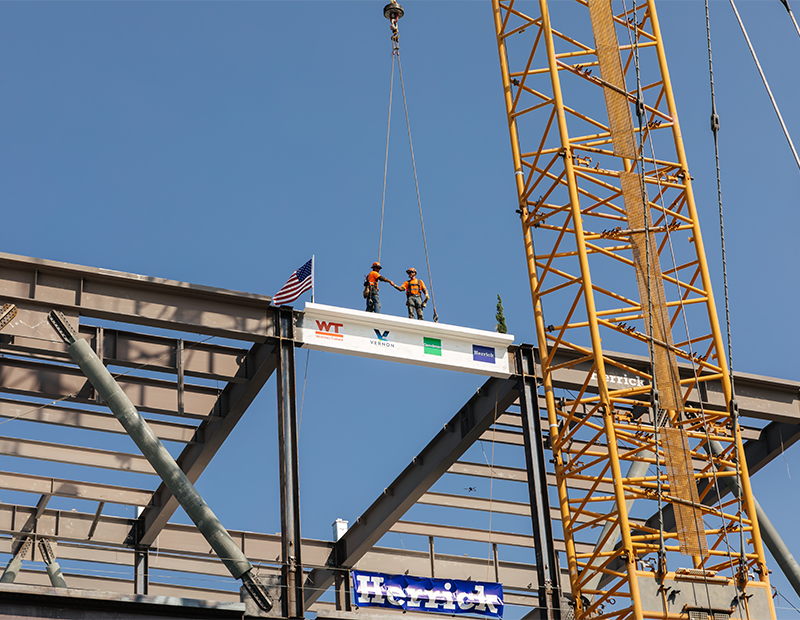Tomorrow’s Jobs Report Will Be Bad. What’s Next for CRE?
Top experts from CBRE, Moody's Analytics, MBA and NAREIT reveal their key takeaways as real estate unpacks the unfolding crisis.
Preliminary U.S. jobs figures for April are dropping in tomorrow morning, the general consensus being that we’ll be looking at a double-digit unemployment rate for the first time since October 2009. As real estate braces for more figures that will be difficult for even the most hardened investor to digest, the big question is how long will it take for the market to snap back. Since the crisis began, more than 30 million Americans filed initial unemployment claims, accounting for about 20 percent of the country’s workforce.
“The good news is that once we begin to see the lockdown ending in a month or so, we expect to see a fairly rapid snapback of the headline unemployment rate down from 15 to 16 percent to something closer to 8.5 percent,” Spencer Levy, CBRE head of research for the Americas & senior economic advisor, told Commercial Property Executive, noting that many of the lost jobs are in the service sector, primarily restaurants, travel, hotels and related industries.
READ ALSO: Pandemic Unlikely to End Construction in 2020
The 8.5 percent (or so) will then “bleed back down closer to where we were a few months ago over the next three years, getting down around 4.5 percent. That first drop will be rapid. The second drop will take some time.”
According to Mortgage Bankers Association Chief Economist Jamie Woodwell, “One of the challenges we have right now is that the situation is unfolding so quickly that a lot of the economic data we’re getting may not be all that indicative of where we are at the time we’re getting the data.”
The lack of clarity has prompted many property owners, lenders and other parties facing uncertainty about the virus and its impact on the economy to “pause new activity and to really focus on their existing portfolios,” Woodwell said. With more clarity, that trend will reverse with more market participants re-entering the market and looking for opportunities.
Getting past headline numbers and into some of the details, NAREIT economist Calvin Schnure said he’ll be looking at tomorrow’s jobs numbers to reveal something about the “depth and breadth” of the weakening and how it impacts the rest of the economy, including commercial real estate.
The “depth” will be measured in the sheer number of job losses. The “breadth” will be the impact on income by looking at the change in average hourly earnings and the change in hours worked. Schnure said he will also be looking to see how much the job losses reported in March have spread outside of retail, leisure and hospitality—all service sector jobs—and into conventional business employment and financial activities and so forth, which impact the office sector.
Looking at asset classes
Moody’s Analytics Head of CRE Economics Victor Calanog said that, with the exception of senior housing, we might not actually see that much distress on the occupancy side for most asset classes.
“It is too soon to see movement, and for multifamily, a lot of households are hunkered in place because of quarantine rules and rent support. The hits will come sooner on the rent side as parties renegotiate terms,” he said. “And hotels, of course, have never been in a situation where RevPAR has gone to zero.”
The industrial sector might stand to benefit from the shift to more online activity. “Over the long run, trends that have been building up steam in retail (like the shift to online channels) and office (like the decline in usage intensity on a square foot per employee basis) will likely accelerate,” Calanog concluded.
READ ALSO: Top US Managers, Owners Share Reopening Strategies
Through April at least, most of the sectors were able to collect most of their rents, according to Schnure. In fact, a whopping 98 percent of NAREIT members say they have been collecting all their rents, including the apartment sector. Many retail REITs, however, malls and shopping centers, have tenants that are having difficulty making their rent payments.
While all experts agree the “Corona Crash” has almost nothing in common with the 2008 financial crisis, the commercial real estate industry learned many valuable lessons from the earlier downturn and used the extended bull market to shore up balance sheets, paying down and restructuring debt and lengthening maturities while also raising equity. In addition to cash and securities, they also have lines of credit. “For most REITs, they have enough to hold them over for many months or a year without running out of cash,” Schnure said.
Levy of CBRE pointed out that the SBA Paycheck Protection Program (PPP) loans have allowed many businesses to continue paying rent. The brokerage anticipates that the industry will hit bottom for rent collection in May or June. Once rent rolls are known, that will allow industry professionals to conduct price discovery and get a better idea of the full impact on property values.
The question tomorrow morning is not how bad the numbers will be, as weekly unemployment claims have already braced the market for the worst. “We’ll be able to bear it and move forward,” Levy maintained. “We know the bad news in front of us. But once the doors are opening, we think that there is light in front of us as well.”












You must be logged in to post a comment.